Best Geiger Counter for Radiation Detection
This is an updated review of the best Geiger counter. Our first roundup was several years ago and we will continue to update as new products are released and as more radiation detection equipment becomes available.
A Geiger counter can be a niche tool for preparedness, but it is one of those tools that is irreplaceable when you actually need it. There are many types of Geiger counters available and they are not just used during radiological emergencies.
Demand in the industrial sector drives down the costs of Geiger counters for everyone. This is good news for emergency responders, preppers, and survivalists since it keeps the specialty tool from breaking our budget.
We have researched, tested, and identified the best overall Geiger counter, as well as options for every day and those on a budget. We will show you how we got to our conclusions and share some info on Geiger counters along the way.
Contents (Jump to a Section)
The Best Geiger Counter
GQ GMC-300S
Inexpensive, Accurate, and Reliable
A cheap measurement device that is easy to use and accurate enough to trust.
*Price at time of publishing; check for price changes or sales.
The GMC-300S is not sleek and it won’t wow your buddies, but it gets the job done. It detects Beta, Gamma, and X-Ray radiation. It is a lightweight 4-ounce handheld and it runs on a rechargeable battery. This thing will detect and quantify almost anything from background radiation all the way to Fukushima-level disasters.
The GQ GMC-300S Geiger Counter is the cheapest Geiger counter you can trust on the market. A few counters hook to smartphones that run slightly more inexpensive, but their accuracy is unverified and reports on their quality are not promising.
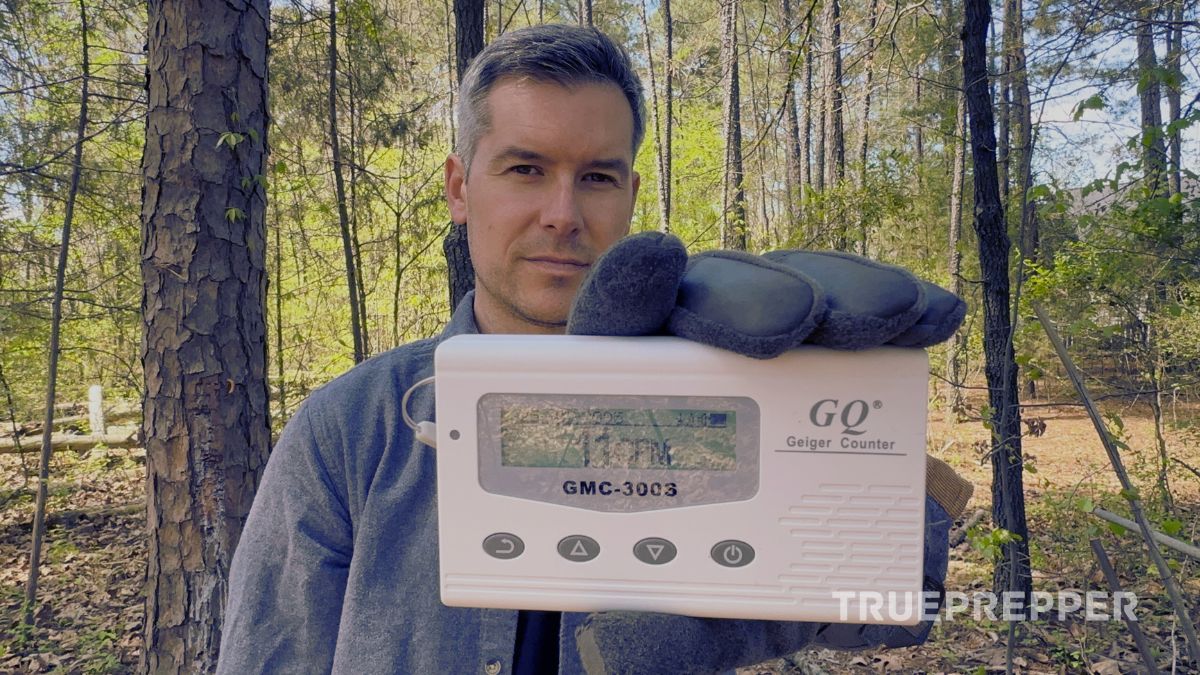
Upgrade Geiger Counter
GQ GMC-320 Plus
Effective, Data-Collecting, and Trusted
Understand the entire picture with this gyroscope and temperature-enabled Geiger counter with built-in tracking.
*Price at time of publishing; check for price changes or sales.
The GMC-320+ is a solid upgrade that is similar to our top pick. It’s perfect for monitoring and recording with its onboard flash memory. Coming pre-configured makes it easy to pick up and use immediately, whether it’s in the lab or setting a background grid. The temperature sensor and gyroscope help set it apart from its cheaper alternative, giving you more data to collect to understand exactly what is happening.
If you want accuracy and to understand the entire site picture, the GQ GMC-320 Plus Geiger Counter is ready to help you out right out of the box.
Everyday Carry Geiger Counter
NUKAlert
Tiny, Portable, and Easy to Use
There is nothing to it, and that’s the beauty of this super-simple radiation monitor.
*Price at time of publishing; check for price changes or sales.
The NUKAlert is a small keychain device that detects radiation. It does not have the strengths of a laboratory Geiger counter, since it does not display anything or discern radiation types. Instead, it gives an audible tick and acts as a dosimeter. The faster and more frequent the ticks, the higher the current radiation exposure.
Some owners are weary of the ticks they hear from the device constantly, but they are barely audible up close and it shows the device is simply picking up background radiation. Once the NUKAlert is close to a radiation source, the clicks become much louder and closer together. This usually means that you should get out of dodge!
This tiny keychain provides one of the only ways you can monitor radiation levels on the go without paying attention to a dosimeter/Geiger counter screen. It uses a lithium coin cell battery rated at 1,000 mA-hr and it lasts over 10 years without needing replacement.
For those who want to be worry-free on the move, the NukAlert Radiation Monitor and Alarm is the way to go
Everything We Recommend
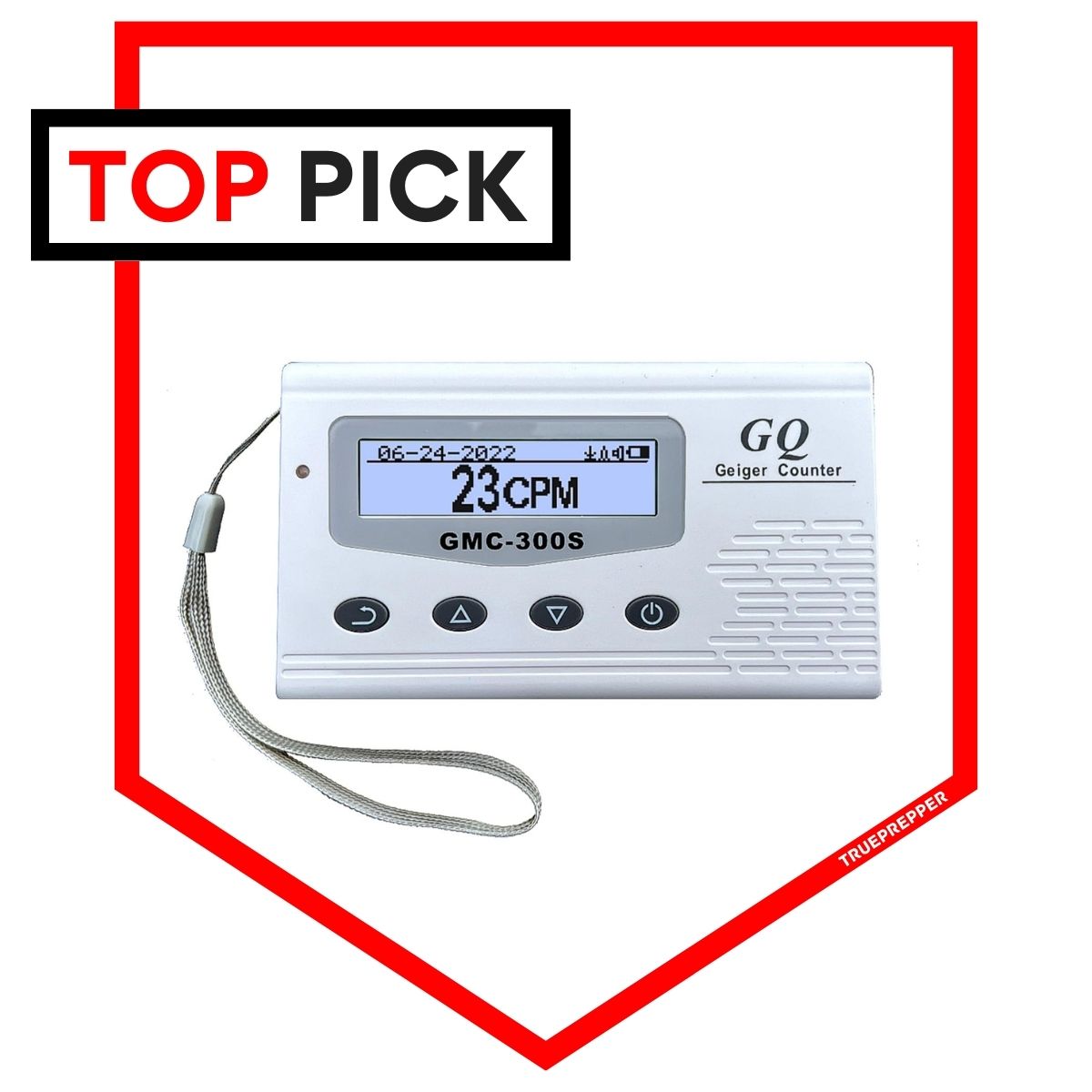
A cheap measurement device that is easy to use and accurate enough to trust.
Where to Buy
*at time of reviewing
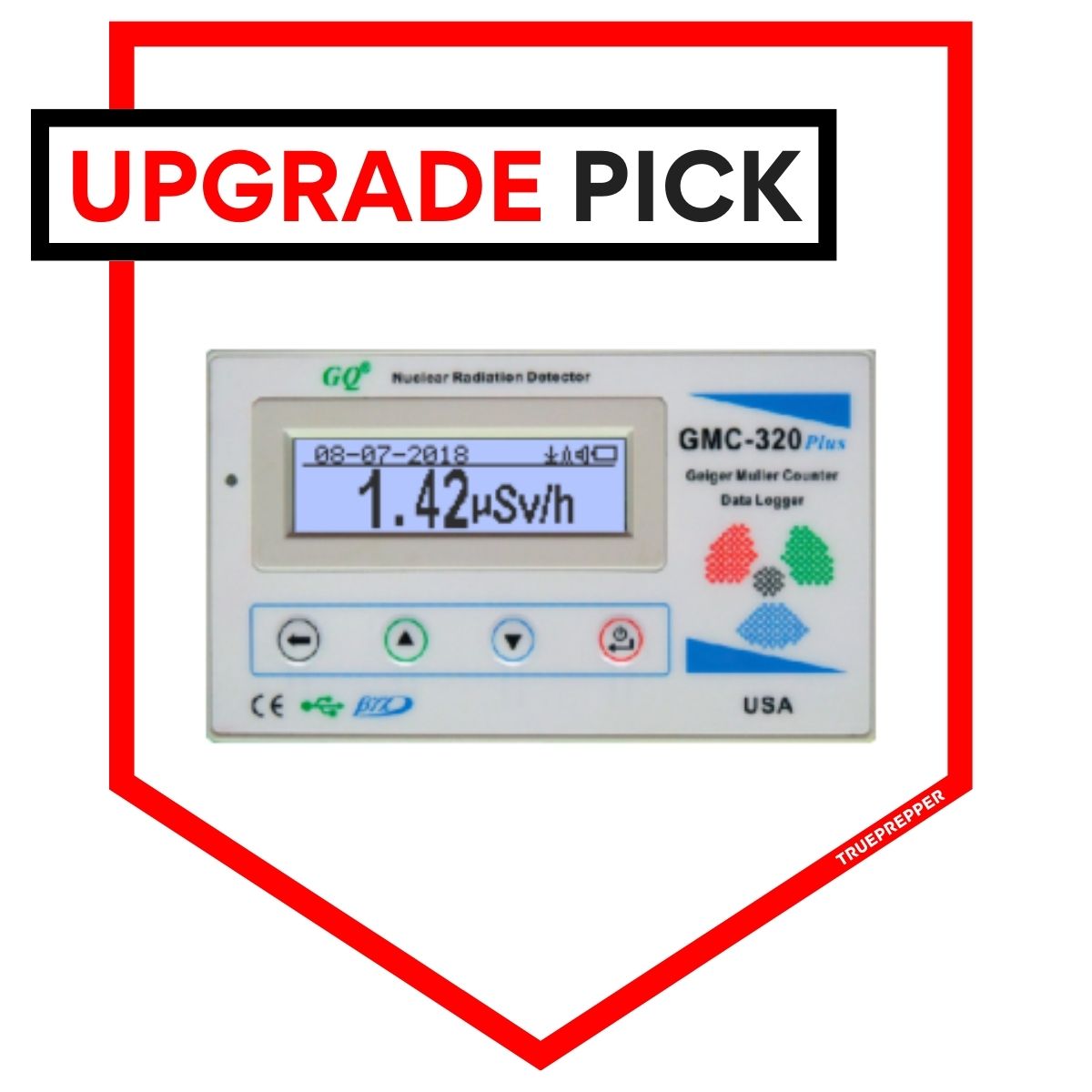
Understand the entire picture with this gyroscope and temperature-enabled Geiger counter with built-in tracking.
Where to Buy
*at time of reviewing
What is a Geiger Counter?
A Geiger counter is a device that detects and measures ionizing radiation. They used to use a Geiger-Mueller tube, which can be another name for the device. As you might expect, Hans Geiger and Walther Mueller invented the original tube in 1928. The detector they invented is relatively low cost and has very few drawbacks for radiation detection. Since the 1950s, Geiger counters have adopted halogen tubes since they have a longer life and lower operating voltage.
Geiger counters are used for a variety of radiation-detecting applications. I used them extensively in the military. Applications they can be used for include:
- Radiation dosimetry
- Nuclear industry monitoring
- Radiological protection
- Military mitigation
- Experimental physics
Geiger counters are also extremely useful for preppers looking to be prepared in the event of a nuclear attack, EMP, nuclear accident, or space ionization event. The counters are often not electromagnetically shielded, so it is a good idea to store them in a Faraday cage so they can be operational after an EMP event.
What Can a Geiger Counter Detect?
A Geiger counter looks for ionizing radiation. Ionizing radiation is what you typically think of when talking about radiation – radiation that detaches electrons from atoms and molecules. Detached electrons are referred to as ions, hence ‘ionizing radiation’.
Subatomic particles emitted as ionizing radiation travel extremely fast and can generate electromagnetic waves of high energy. X-rays, gamma rays, and some UV rays are ionizing forms of electromagnetic waves. Infrared, microwaves, and radio are non-ionizing and are not intentionally detected by a Geiger counter.
The subatomic particles that are usually part of radioactive decay include alpha and beta particles as well as neutrons. Geiger counters typically look for:
- Beta emissions – Beta particles are the second largest emission, behind Alpha particles. They are problematic in that they are still small enough to pierce most materials, including clothing. Although they are not as damaging as Alpha particles, the dosage can be higher since it is harder to shield.
- Gamma emissions – gamma rays can pierce through several feet of radiation shielding and are absorbed into the body. It is hard to mitigate gamma radiation except by escaping the source.
- X-Ray emissions – X-rays can also show the presence of Alpha particles. Alpha particles are the largest particles ionized and can be extremely damaging through skin contact, ingestion, and inhalation. Luckily, membranes as thin as a sheet of paper can stop them.
Detected radiation is displayed as a count or a dose with Geiger counters. Devices that only show dosage are referred to as dosimeters. Devices that only show counts are referred to as radiation detectors. Both count and dose measure radiation over a period, most commonly as Sieverts per hour (Sv/hr).
Some Geiger counters use audible clicks to give the number of ionization events detected. This allows the user to concentrate on things other than the radiation detector while still knowing the amount of radiation in an area.
How Accurate is a Geiger Counter?
Geiger counters have varying abilities to detect and measure radiation. Many Geiger counters use peripheral wands that attach to the main device to measure specific types of radiation. Geiger-Mueller tubes are unable to tell the difference between radiation events, so attachments or different mode settings are often used to isolate radiation types.
Counting or dosing radiation is less helpful if you don’t know the type of radiation. Learning the type of radiation can also help you identify the radiating isotope. This helps HAZMAT (Hazardous Material) responders track down the source of the radiation and even neutralize or contain it if possible.
Pancake probes, wands with a small circular ‘pancake’ on the end with a specialized mesh, are typically used to detect large areas.
Windows are used on probes to reduce radiation detected by simply shielding out radiation you don’t wish to detect. A small thin mica sheet can slide over a probe to eliminate Alpha particle detection. A thick steel door is used to swing over some probes to eliminate beta particle detection, leaving just gamma detection capabilities. We used all of these with the Victoreen detector in the military and while they can be accurate, it was a bit cumbersome to figure out at first.
Most probes are used in military and laboratory settings when you are trying to understand radiation. General radiation readings can be better for prepping and survival use since they more simply provide counts and dosages of combined radiation. Accuracy is still important for these, although they are not in a laboratory setting. When you sacrifice accuracy, you are usually hurting your ability to measure background dose- which is typically on the lower end of the scale.
The detection ranges for the Geiger counters we suggest are:
- GQ GMC-300S: 0.01 µSv/h to 99 Sv/hr – low enough for background readings and high enough to track a lethal radiation dose in 2 minutes.
- GQ GMC-320 Plus: 0.01 µSv/h to 99 Sv/hr – same range as the less expensive model above
- NUKAlert: 1 mSv/hr to 50 Sv/hr – It takes a lot to get this one going, and if it is maxed out, you have less than 5 minutes until you’ve absorbed a fatal dose.
We converted some of these from MeV, Roentgen, rad, rem, etc. to Sievert units, the standard international (SI) measurement of dose.
How to Use a Geiger Counter
Radiation is all around us. It comes from the Earth and comes from space- there is no escaping it and impossible to prevent. Luckily, most radiation is harmless and just a part of life. Harmful radiation is absorbed in small enough doses that it rarely has any effects. If you are exposed to too much, it can be problematic. This is why people are limited to the number of X-rays they can be exposed to.
How do you detect something that is already surrounding you? You set a baseline and measure the difference. Baseline measurements of radiation are called ‘background radiation’ levels. When you first turn on your Geiger counter, you will probably have a reading. Don’t panic- that is probably the background radiation level for where you are.
Anyone who owns a Geiger counter should map background radiation levels for areas in their home if they have time. This way, you can tell when there is a significant increase in exposure that puts you and your family at risk. It also lets you become familiar with the equipment and learn how to operate your specific model.
This amazing chart shows how radiation dose compares to the Sieverts we are naturally (and unnaturally) exposed to:
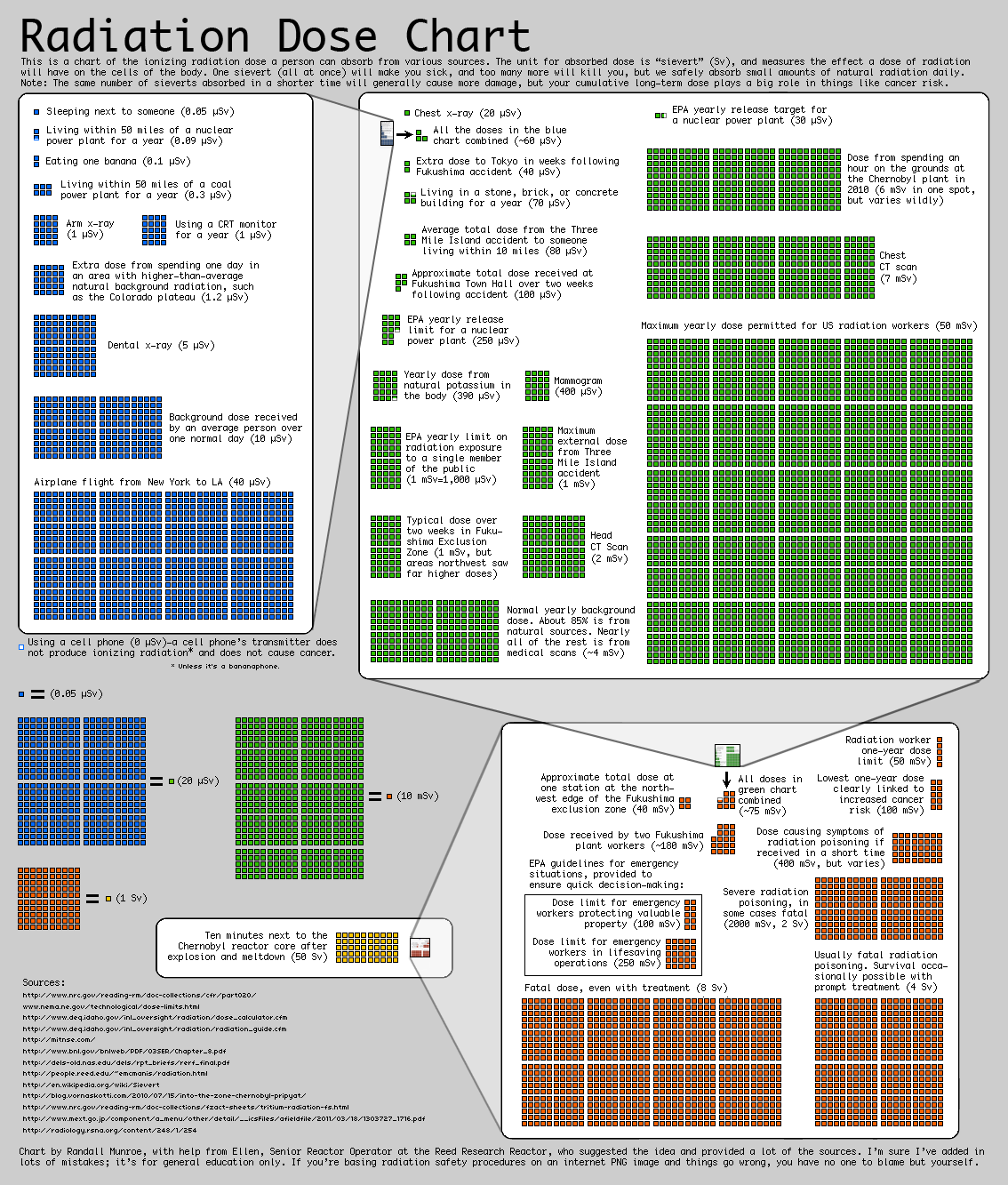
Who Needs a Geiger Counter?
Ionizing radiation has the ability to damage living tissue quickly and over long sustained periods. High exposure rates can cause radiation burns on the skin and bodily membranes, cell damage, and death. High dosage accumulation can cause those same effects but also radiation sickness and cancer. There is no way to build a tolerance or immunity to radiation since it directly affects your cells.
Radiation events are improbable but not uncommon. Hiroshima, Nagasaki, Chernobyl, Three Mile Island, and Fukushima have all demonstrated the raw power and lasting effects radiation can have on huge areas.
Despite the lower chance of a radiation disaster, the impact of one of these disasters can be devastating. There is no substitute for the equipment needed to detect and protect. A small investment in a Geiger counter detector combined with protective masks can help you survive a radioactive event.
A Geiger counter is one of the foundation pieces of a radiation detection kit. These are usually specialized kits to be considered based on your proximity to high-threat areas:
Luckily, advancements have reduced the bulk and increased the durability and ease of use of Geiger counters. This means that they can be included in many types of portable kits, including:
This last bullet point has some exciting options, as we pointed out earlier with our portable EDC pick.
How We Review Products: We research thoroughly before selecting the best products to review. We have vast prepping and survival experience and bring in outside experts when needed. Hours on end are spent testing gear in stressful conditions and using specialized testing gear to verify claims. We assign performance criteria and impartially rate each tested item. Learn more about how we test.
Sources and References
An objective look at the best Geiger counter is useless without sources and references. We leaned on these for the book knowledge that we paired with our practical military experience.
Hare, J. (2010). The Geiger Counter. The Creative Science Center; University of Sussex. (Source).
Hine, G., et al. (1956). Radiation Dosimetry. Academic Press; Elsevier. (Source).
Abele, J. (2012). Watchdog of the Atomic Age – The Geiger Müller Counter in the History of Radiation Protection. PTB Mitteilungen Journal of the Physikalisch-Technische Bundesanstalt. Volume 122. Issue 3. Pages 55 – 66. (Source).
The Final Word
Geiger counters have been around for over 90 years at this point, and survivalists and preppers are thankful to Hans, and his PhD student Walther for taking the time to discover it. A Geiger counter is an irreplaceable piece of specialized equipment for radiation detection. During a radiation attack, accident, or disaster it becomes invaluable for survival.
Our readers have found these articles helpful as well:
- The Best Iodine Tablets for Nuclear Fallout Radiation
- Shelter-in-Place Kit and Guide
- Nuclear Survival Kit List | 16 Essential Items
We presented quite a lot of information, but as always: if you have any more questions let us know and we would be happy to help. Our research and testing settled on the GQ GMC-300S Geiger Counter as the best option given the functionality, durability, versatility, and value. We also gave a shout-out to a few others as potential portable or data-tracking options. Your specific situation may call for a different solution.
Take care of your gear and it will take care of you. Don’t stash it away, but get it out to get familiar with it if you are not using it every day.
Keep exploring, stay prepared, and be safe.
You’ve Been Missing Out
Join the 2+ million preppers that rely on our prepping advice by subscribing to TruePrepper.- Practical guides and tips
- Useful survival giveaways
- Free, forever
- < 0.4% of people unsubscribe
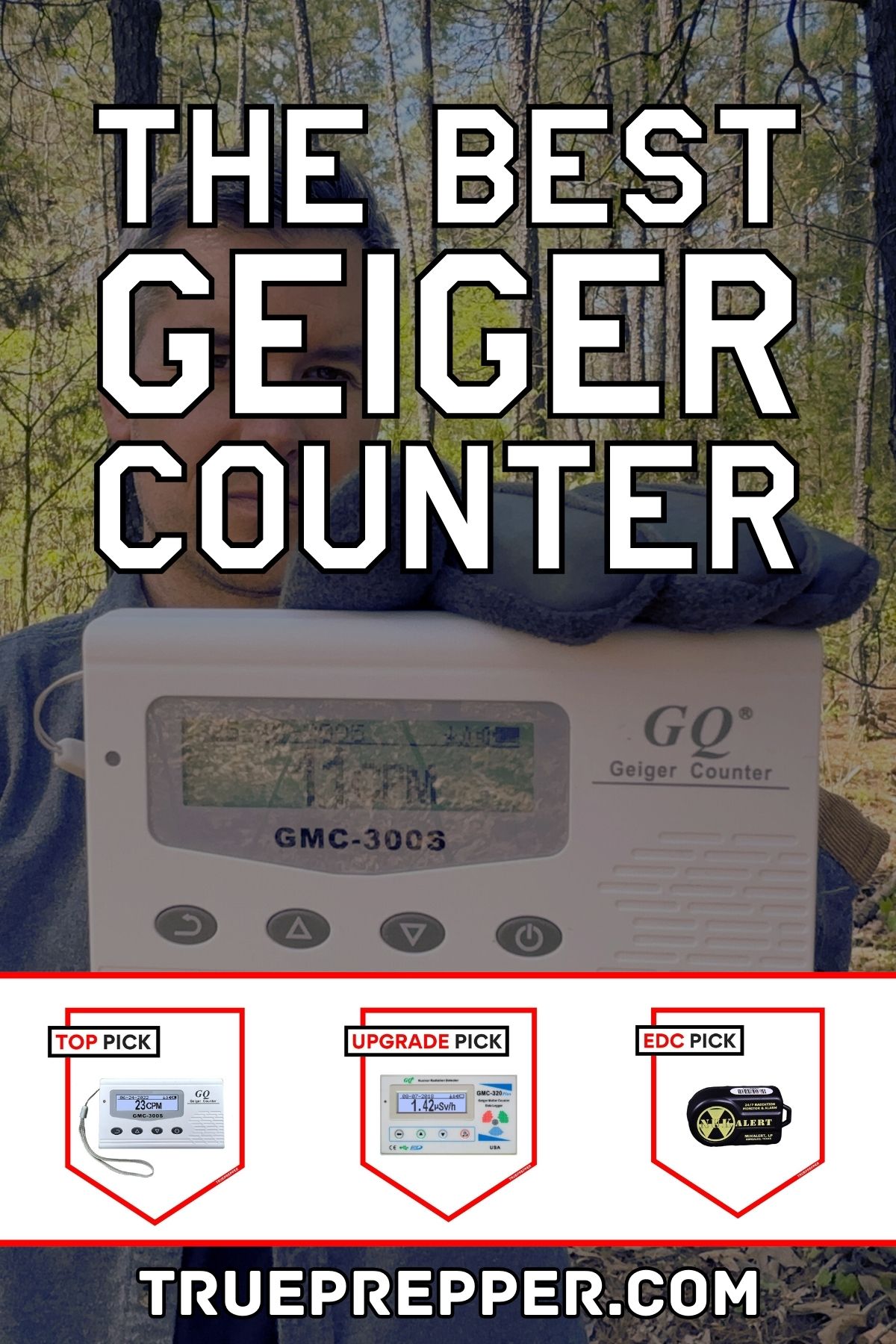

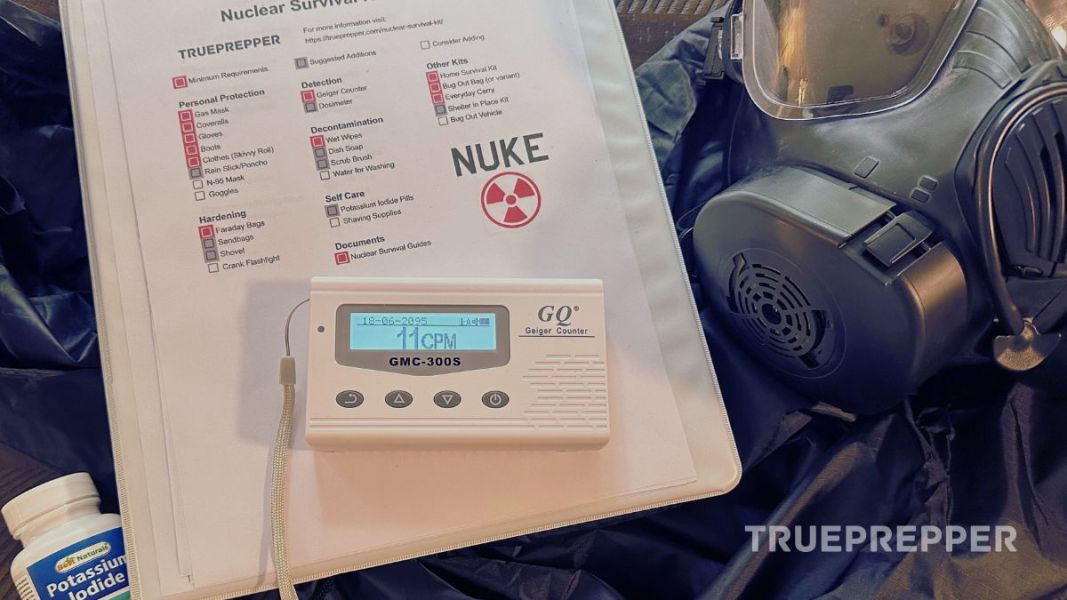
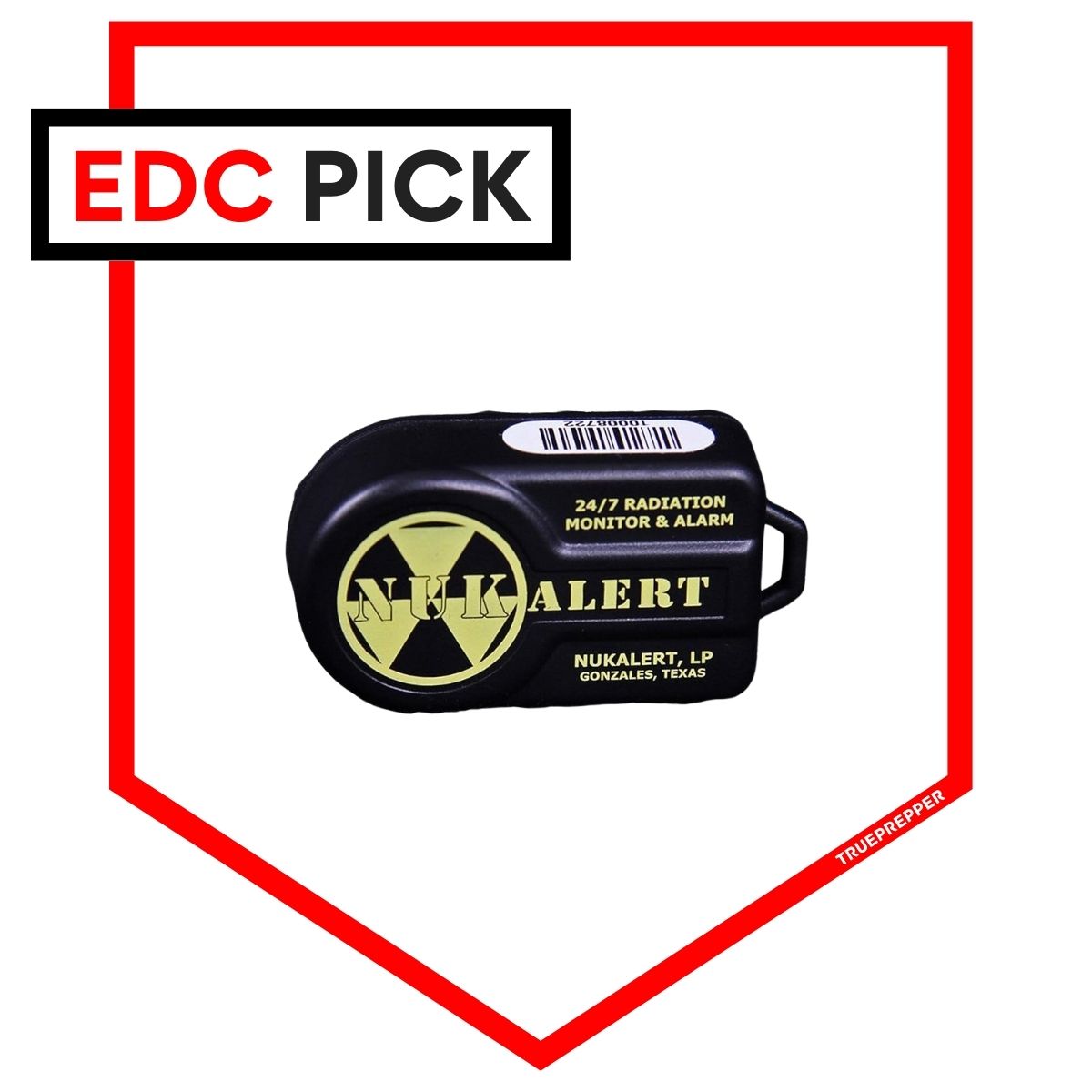
Is there a dependable Geiger counter that has a sensor that is remotely mounted outside of the shelter with the monitor located inside the shelter?
The Civil Defense “Yellow Bricks” had this available as an addon. The V-777 kit was called the V-777A when it included the remote sensor. The remote sensor itself is CD V-717. You’re probably better off looking at surplus- they look relatively expensive online for used equipment: https://ebay.us/MYjMUk
Hope this helps! – Sean